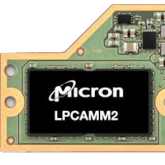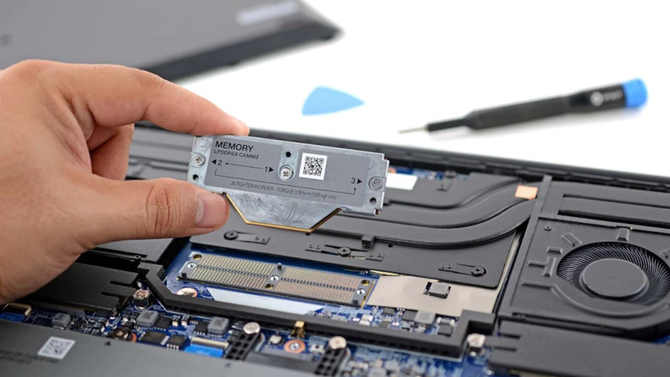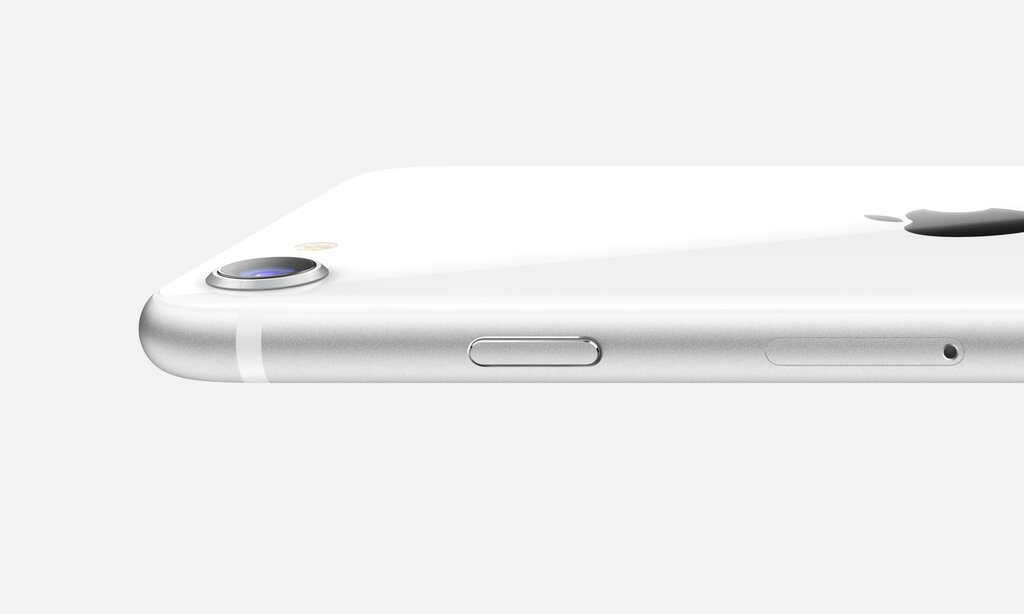 Although CAMM2 and LPCAMM2 modules are a relatively new standard on the market, they have already appeared in the first laptops and notebooks. This type of memory contains LPDDR5 and LPDDR5X chips, but its development does not stop there. JEDEC and DELL have just shared some information regarding the specifications of modules designed to contain LPDDR6 chipsets. Some changes will be introduced in the design and quality of the items used.
Although CAMM2 and LPCAMM2 modules are a relatively new standard on the market, they have already appeared in the first laptops and notebooks. This type of memory contains LPDDR5 and LPDDR5X chips, but its development does not stop there. JEDEC and DELL have just shared some information regarding the specifications of modules designed to contain LPDDR6 chipsets. Some changes will be introduced in the design and quality of the items used.
There will be some changes in the design and quality of components used in CAMM2 and LPCAMM2 RAM modules that use LPDDR6 chips. JEDEC and Dell have shared some information regarding the specifications of the RAM they are designing.
DDR6 memory can provide a significant improvement in data transfer speeds. The standard will debut in 2025
The new version of CAMM2 and LPCAMM2 RAM will use LPDDR6 chips, which will bring significant improvements in data transfer speeds in the future. However, that’s not all, because JEDEC and DELL have shared some information regarding the specifications of the designed modules. There will be a move from 128-bit to 192-bit modules, with each memory module using 48-bit channels made up of two 24-bit subchannels. This results directly from the LPDDR6 memory chip specifications. Another change would be to modify the physical design to remove the soldered SI connectors from the motherboards, as they reduce the speed of the memory subsystem. The new standard assumes the use of daisy-chain connections, which means that the second memory module will be connected to the first.
Micron is the first in the world to offer an LPCAMM2 ready memory module based on LPDDR5X RAM chips
The connectors on the motherboards will also be changed, and will have 6 more connection lines than their predecessors. In addition, PCB quality requirements have been increased, as only Type 4 PCBs can now be used, this means that the new standard uses more paths and ports on a smaller printed circuit board surface, which unfortunately also involves costs Higher production. It is worth noting that this type of PCB allows the use of blind holes, allowing for more complex layouts without the need to drill through the entire thickness of the board. The last important innovation will be the elimination of set screws. JEDEC and Dell aim for tool-less installation of memory, just like regular DDR memory. However, the authorities have not yet developed the final concept of the mechanism for assembling the planned units.
Source: Gedick, Dale

“Prone to fits of apathy. Introvert. Award-winning internet evangelist. Extreme beer expert.”


![Lacrosse’s last match at the Bernabéu! Only great people leave like this [WIDEO] Lacrosse’s last match at the Bernabéu! Only great people leave like this [WIDEO]](https://pliki.meczyki.pl/file/505202/important.jpg)
![JEDEC and DELL have published some specifications for CAMM2 and LPCAMM2 RAM using LPDDR6 chipsets [2]](https://www.purepc.pl/image/news/2024/05/25_jedec_i_dell_opublikowali_czesc_specyfikacji_dla_pamieci_ram_camm2_i_lpcamm2_wykorzystujacych_kosci_lpddr6_2.jpg)
![JEDEC and DELL have published some specifications for CAMM2 and LPCAMM2 RAM using LPDDR6 chipsets [3]](https://www.purepc.pl/image/news/2024/05/25_jedec_i_dell_opublikowali_czesc_specyfikacji_dla_pamieci_ram_camm2_i_lpcamm2_wykorzystujacych_kosci_lpddr6_3.jpg)
![JEDEC and DELL have published some specifications for CAMM2 and LPCAMM2 RAM using LPDDR6 chipsets [4]](https://www.purepc.pl/image/news/2024/05/25_jedec_i_dell_opublikowali_czesc_specyfikacji_dla_pamieci_ram_camm2_i_lpcamm2_wykorzystujacych_kosci_lpddr6_1.jpg)

![The best smartphones of 2022. The iPhone has been defeated again. There is a surprise [RANKING] The best smartphones of 2022. The iPhone has been defeated again. There is a surprise [RANKING]](https://bi.im-g.pl/im/6e/f3/1b/z29310318IER,Smartfony-Roku-2022.jpg)





